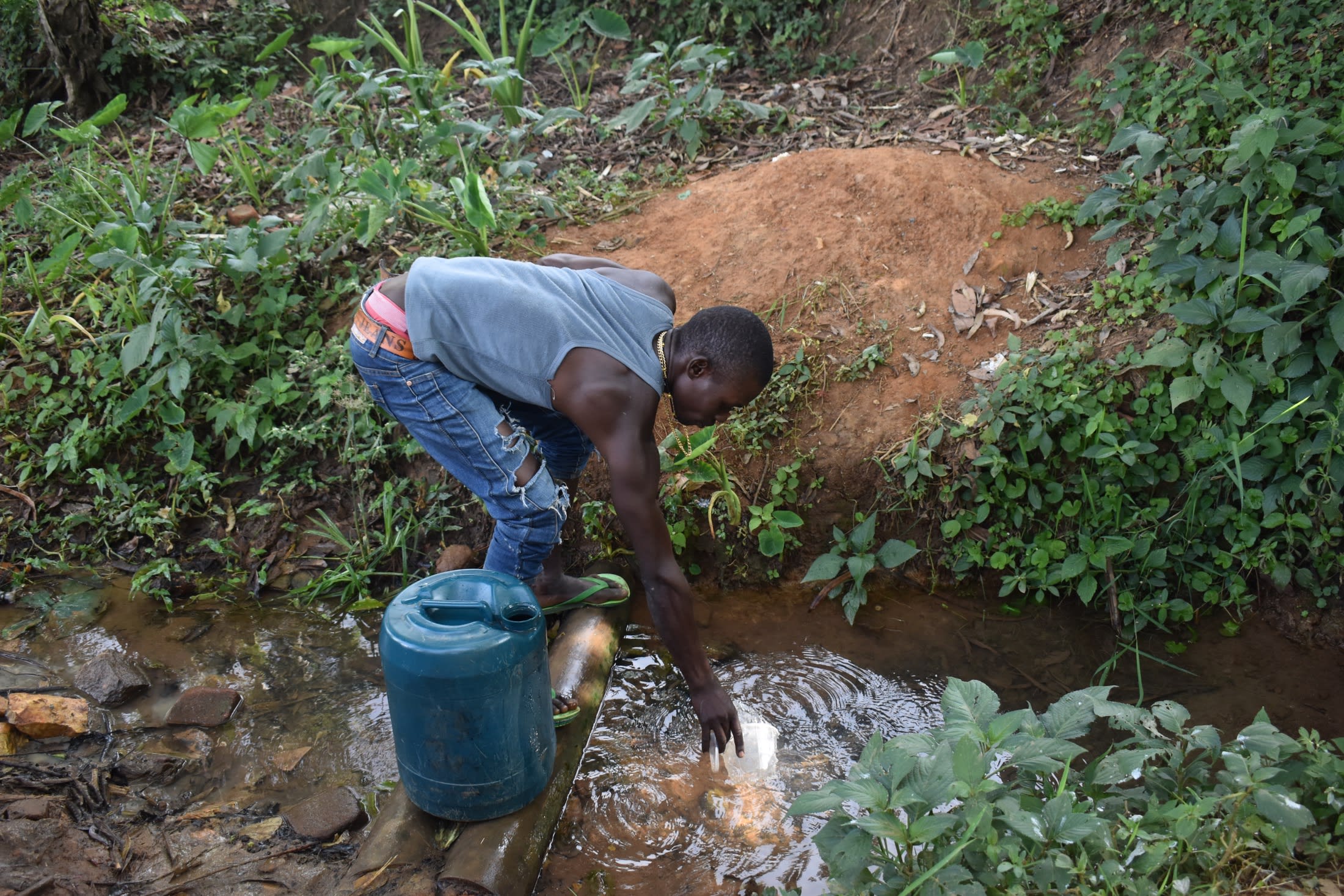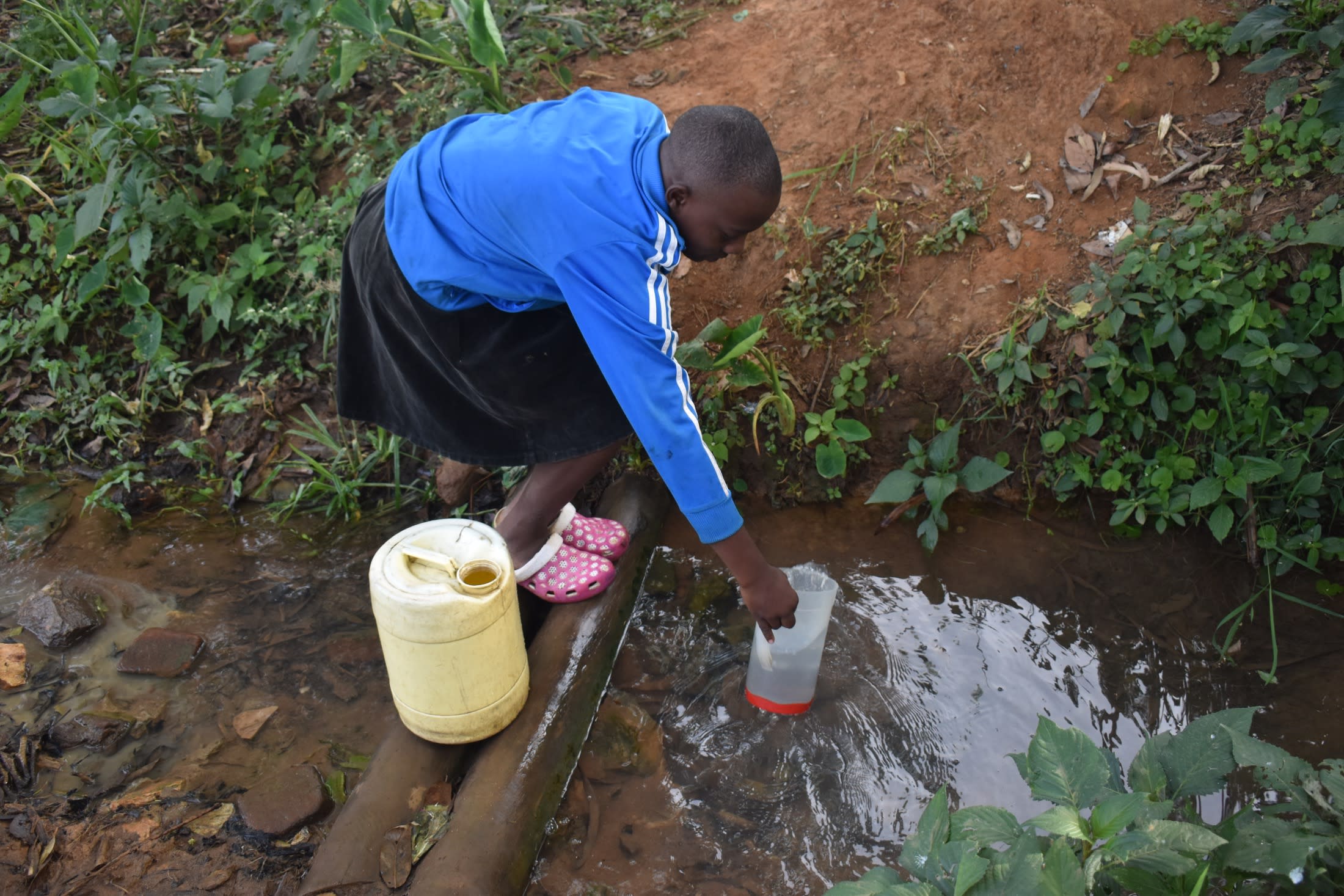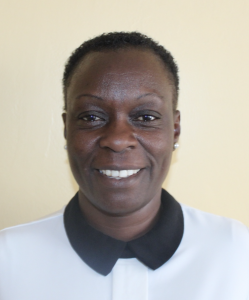The water of Charles Musire Spring is making Muhoni Community's 350 people sick.

The spring is open to all sorts of contamination from humans and animals alike. It is not safe for drinking and community members often suffer from diarrhea, stomach aches, and cases of typhoid leading them to spend much of their limited incomes on medications and medical treatment.

When we asked 25-year-old farmer Jacob Baraza (shown above) how the water situation affects him, he said, "Personally I take a lot of time queuing for water instead of doing other things and sometimes when it rains you can not draw from the spring because the water becomes dirty."
But, believe it or not, illness from drinking the contaminated water is not Muhoni's only water issue. Simply collecting water in a reasonable amount of time from the spring is a real challenge.
The spring is overcrowded and community members often try to collect water either early in the morning or late in the evening with hopes that there will not be long lines but inevitably there is always a queue. The time wasted at the spring waiting their turn to get water steals from other important things like working and learning.
“Universal access to safe drinking water is a fundamental need and human right. Securing access for all would go a long way in reducing illness and death, especially among children.”- UNICEF

"After school, I normally get many people at the spring, which makes me take my bath late, and yet I have some homework from school to do," said 13-year-old Terry collecting water in the photo above.
A protected spring will not only provide Muhoni's people with safe drinking water but also make a time-consuming chore into an easier and quicker process so they regain more of their valuable time to concentrate on other things.
What We Can Do:
Spring Protection
Protecting the spring will help provide access to cleaner and safer water and reduce the time people have to spend to fetch it. Construction will keep surface runoff and other contaminants out of the water. With the community’s high involvement in the process, there should be a good sense of responsibility and ownership for the new clean water source.
Fetching water is a task predominantly carried out by women and young girls. Protecting the spring and offering training and support will, therefore, help empower the female members of the community by freeing up more of their time and energy to engage and invest in income-generating activities and their education.
Training on Health, Hygiene and More
To hold trainings during the pandemic, we work closely with both community leaders and the local government to approve small groups to attend training. We ask community leaders to invite a select yet representative group of people to attend training who will then act as ambassadors to the rest of the community to share what they learn. We also communicate our expectations of physical distancing and wearing masks for all who choose to attend.
The training will focus on improved hygiene, health, and sanitation habits in this community. With the community’s input, we will identify key leverage points where they can alter their practices at the personal, household, and community levels to affect change. This training will help to ensure participants have the knowledge they need about healthy practices and their importance to make the most of their water point as soon as water is flowing.
Our team of facilitators will use a variety of methods to train community members. Some of these methods include participatory hygiene and sanitation transformation, asset-based community development, group discussions, handouts, and demonstrations at the spring.
One of the most important issues we plan to cover is the handling, storage, and treatment of water. Having a clean water source will be extremely helpful, but it is useless if water gets contaminated by the time it is consumed. We and the community strongly believe that all of these components will work together to improve living standards here, which will help to unlock the potential for these community members to live better, healthier lives.
We will then conduct a small series of follow-up trainings before transitioning to our regularly scheduled support visits throughout the year.
Training will result in the formation of a water user committee, elected by their peers, that will oversee the operations and maintenance of the spring. The committee will enforce proper behavior around the spring and delegate tasks that will help preserve the site, such as building a fence and digging proper drainage channels. The fence will keep out destructive animals and unwanted waste, and the drainage will keep the area’s mosquito population at a minimum.

 Protected Spring
Protected Spring
 Rehabilitation Project
Rehabilitation Project








































